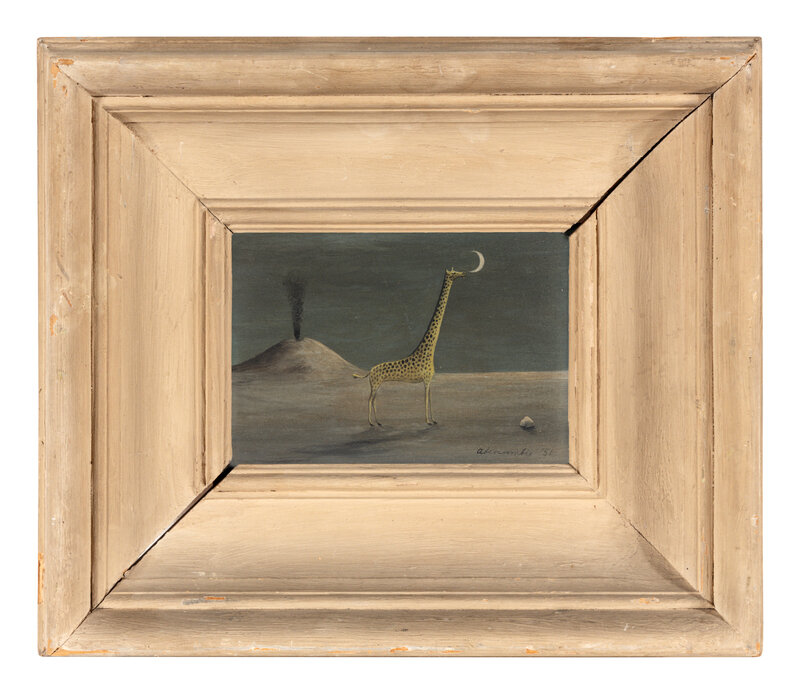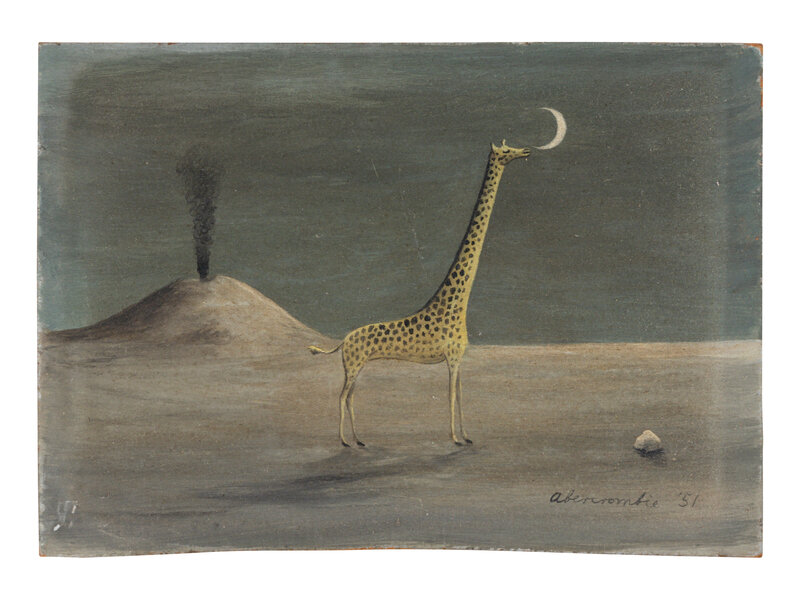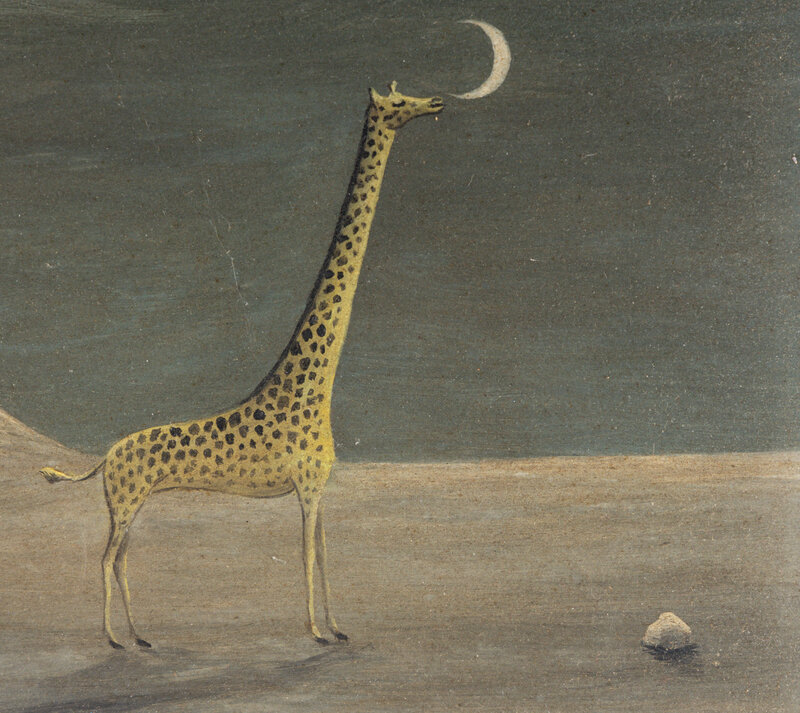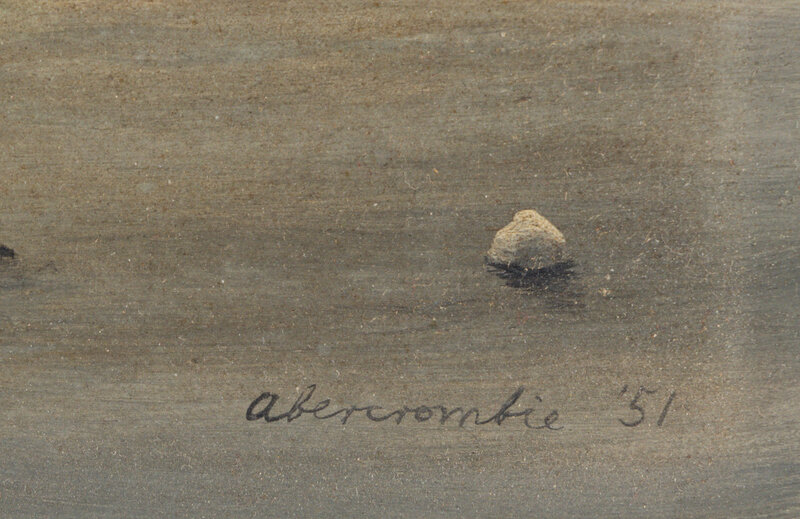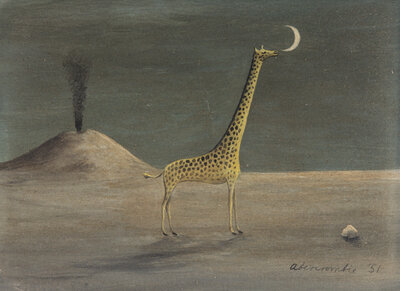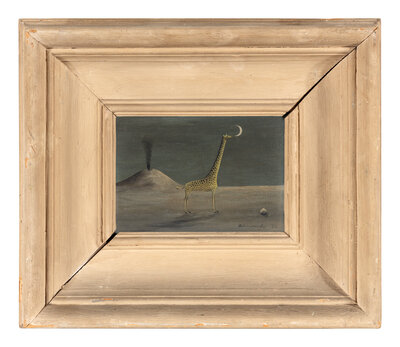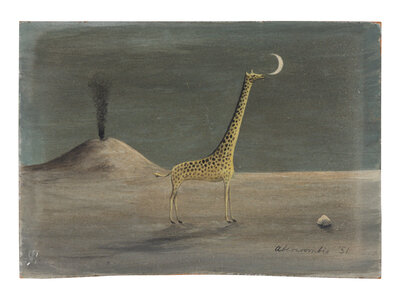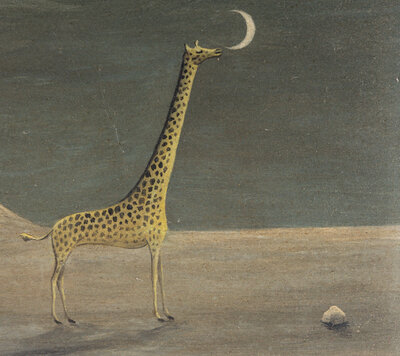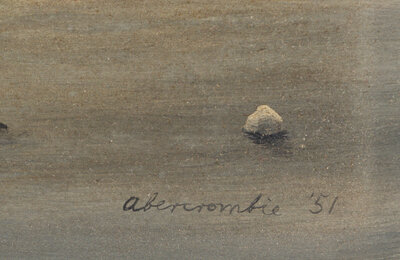Condition Report
Contact Information
Auction Specialists
Lot 43
Gertrude Abercrombie
(American, 1909-1977)
Giraffe and Moon with Volcano (Giraffe and Volcano #2), 1951
Sale 1327 - Post War and Contemporary Art
Apr 24, 2024
10:00AM CT
Live / Chicago
Own a similar item?
Estimate
$50,000 -
70,000
Price Realized
$266,700
Sold prices are inclusive of Buyer’s Premium
Lot Description
Gertrude Abercrombie
signed Abercrombie and dated (lower right)
5 x 7 inches.
(American, 1909-1977)
Giraffe and Moon with Volcano (Giraffe and Volcano #2), 1951
oil on masonite
signed Abercrombie and dated (lower right)
5 x 7 inches.

